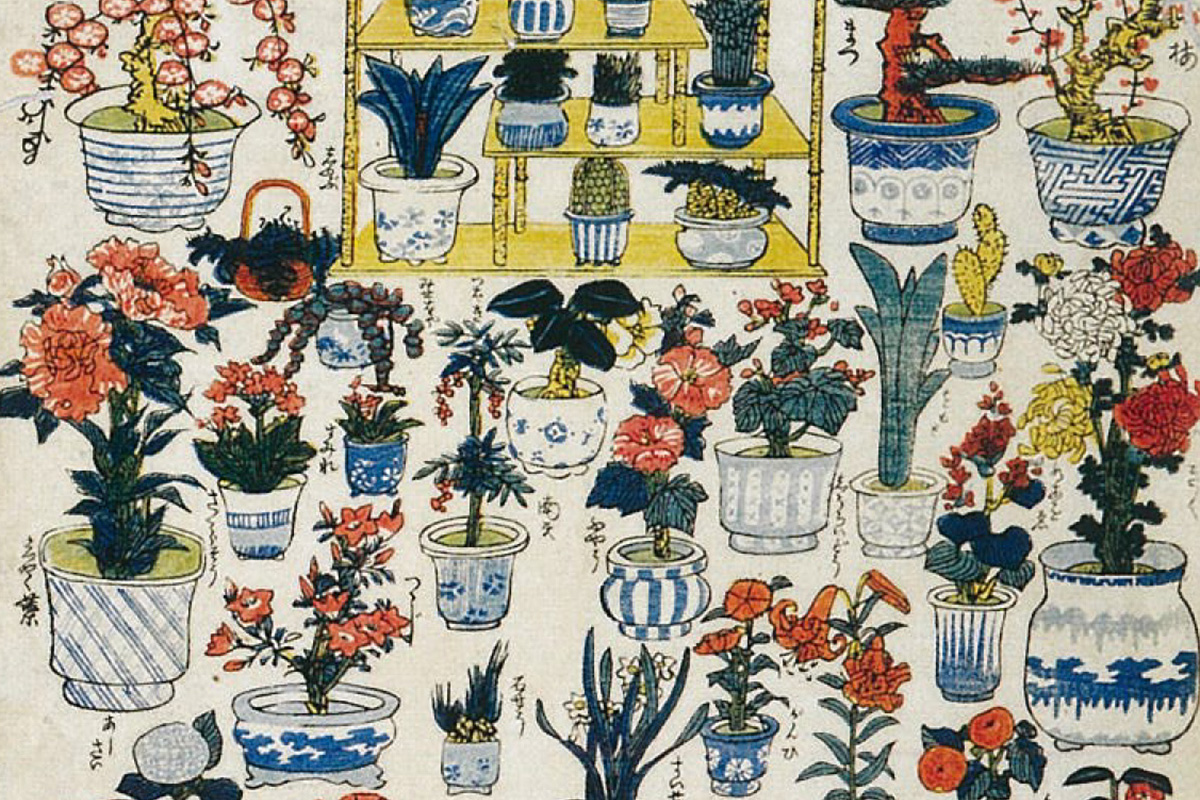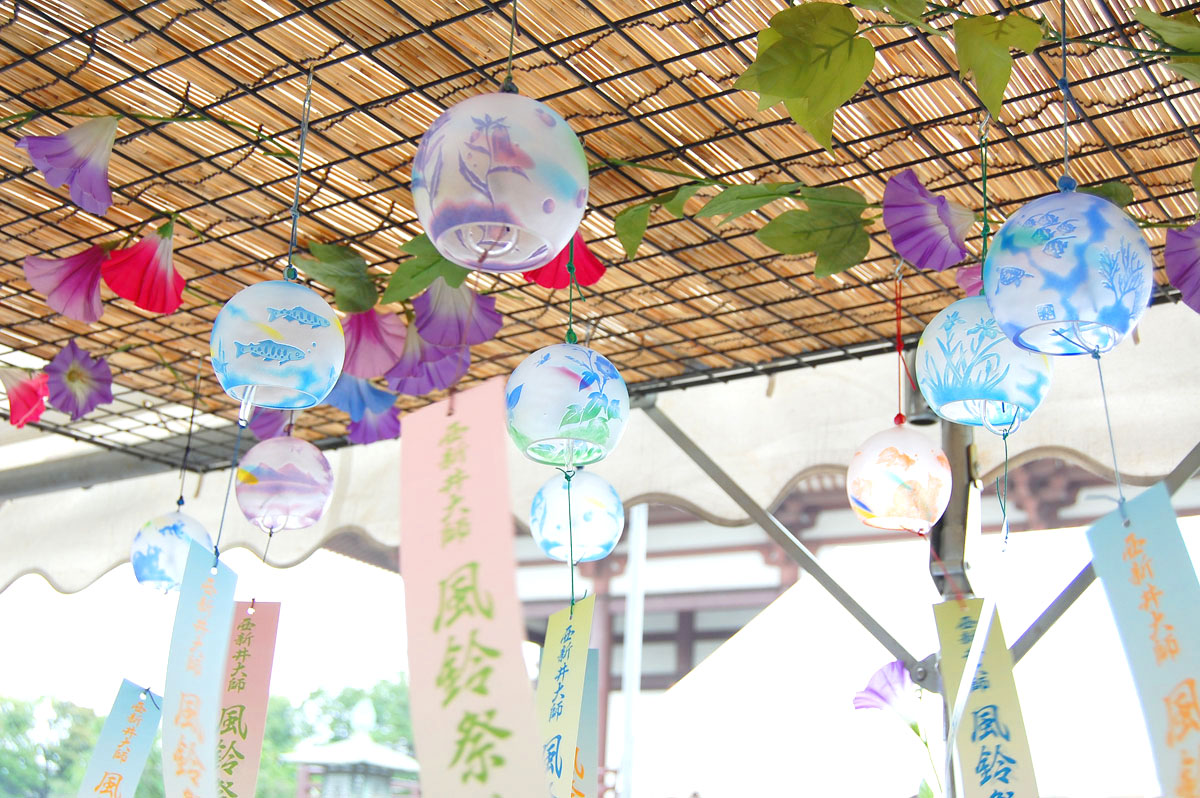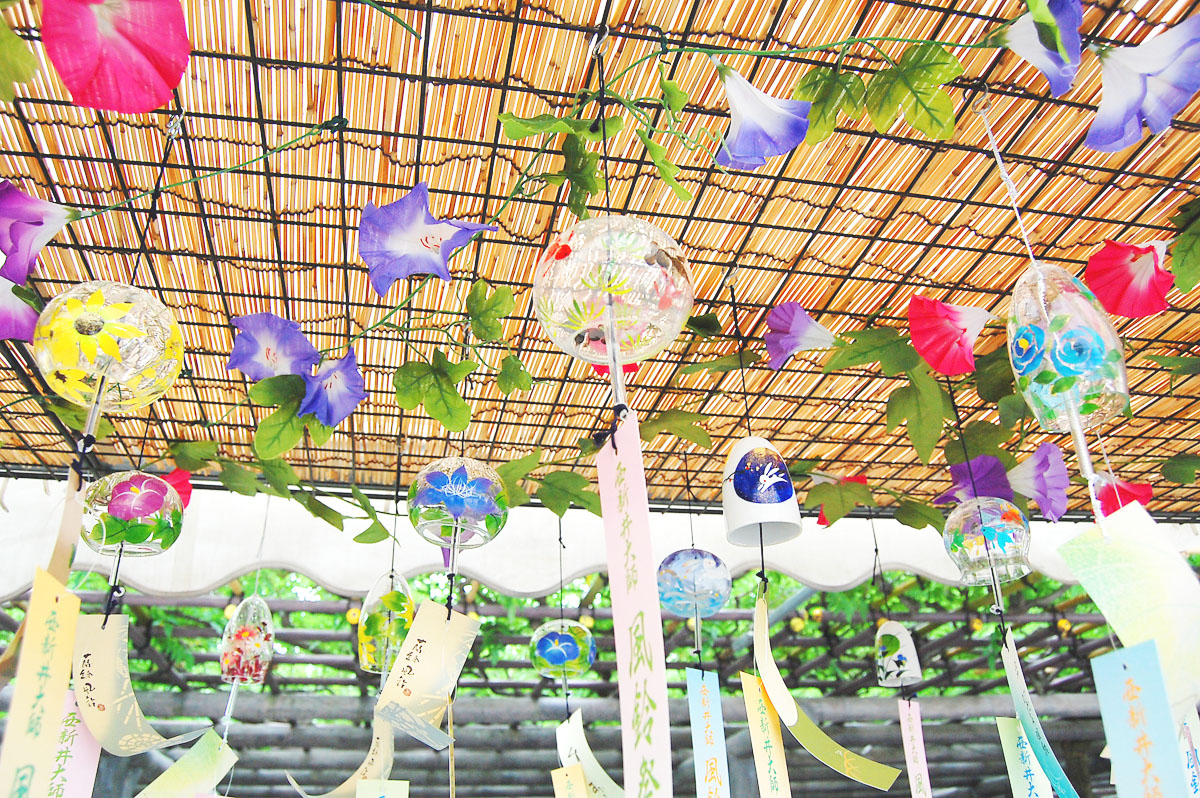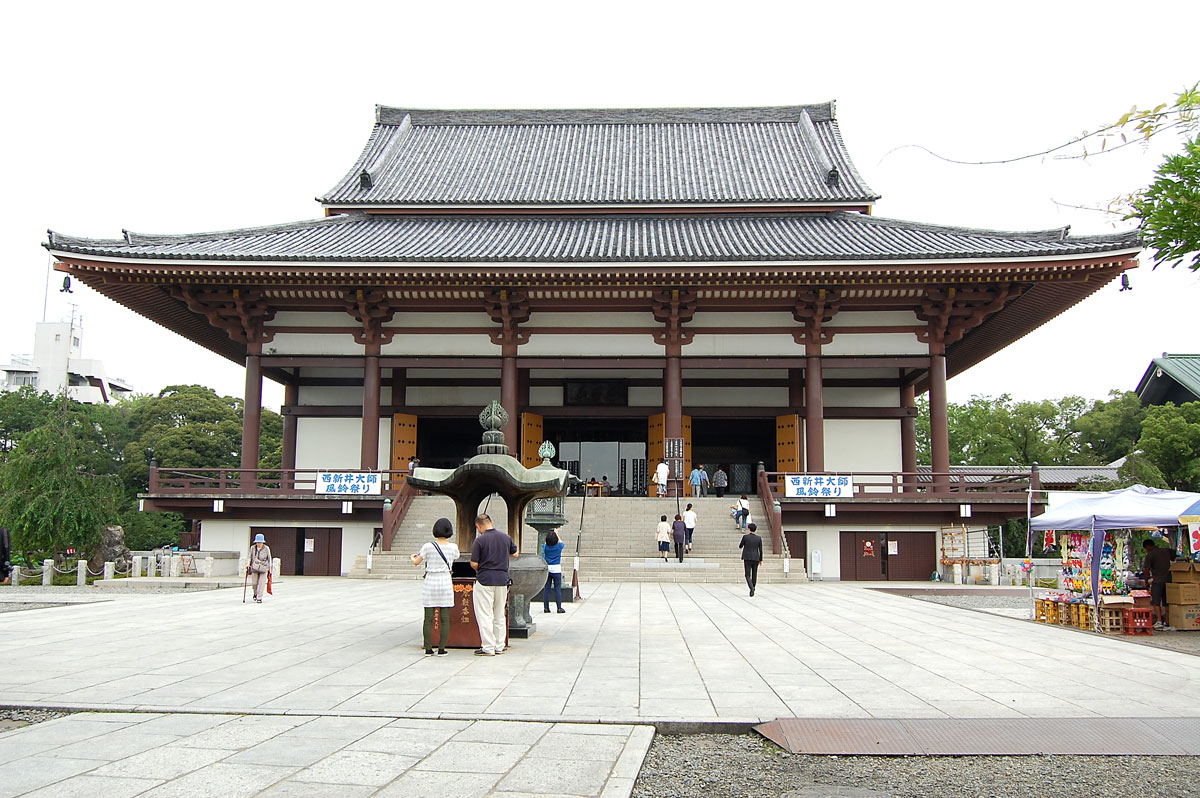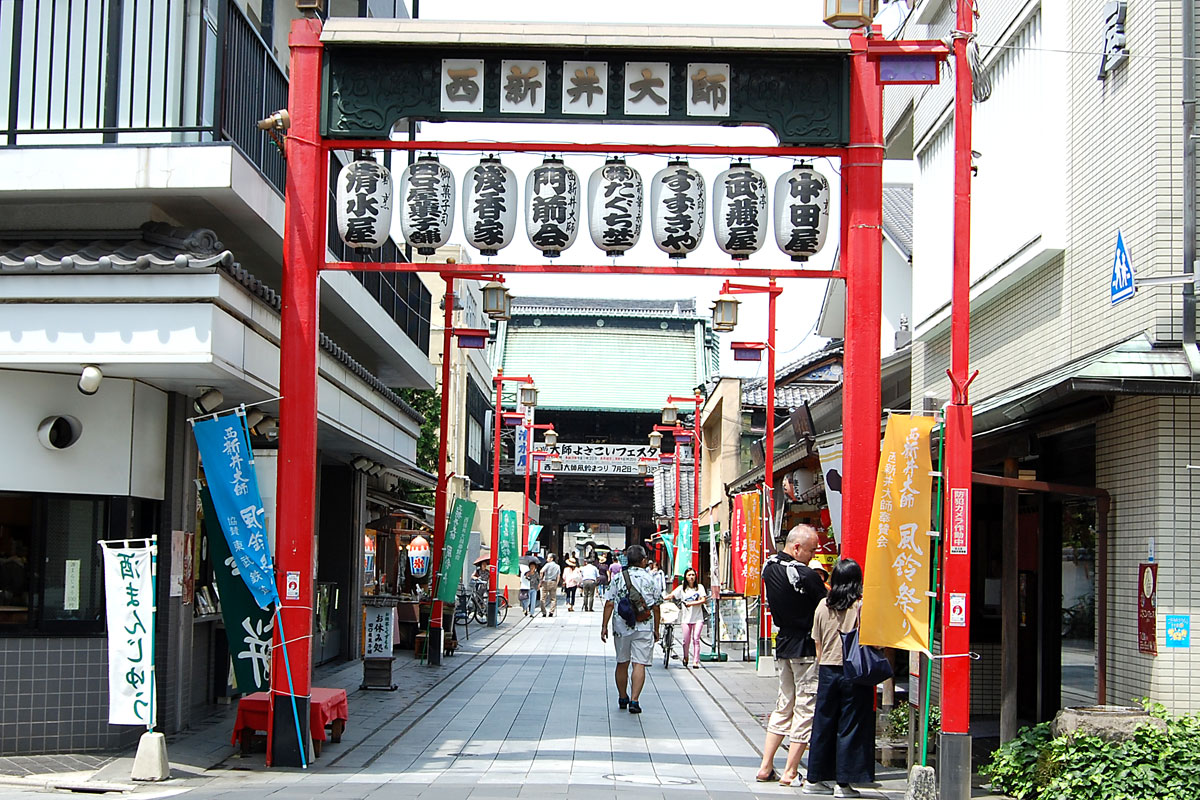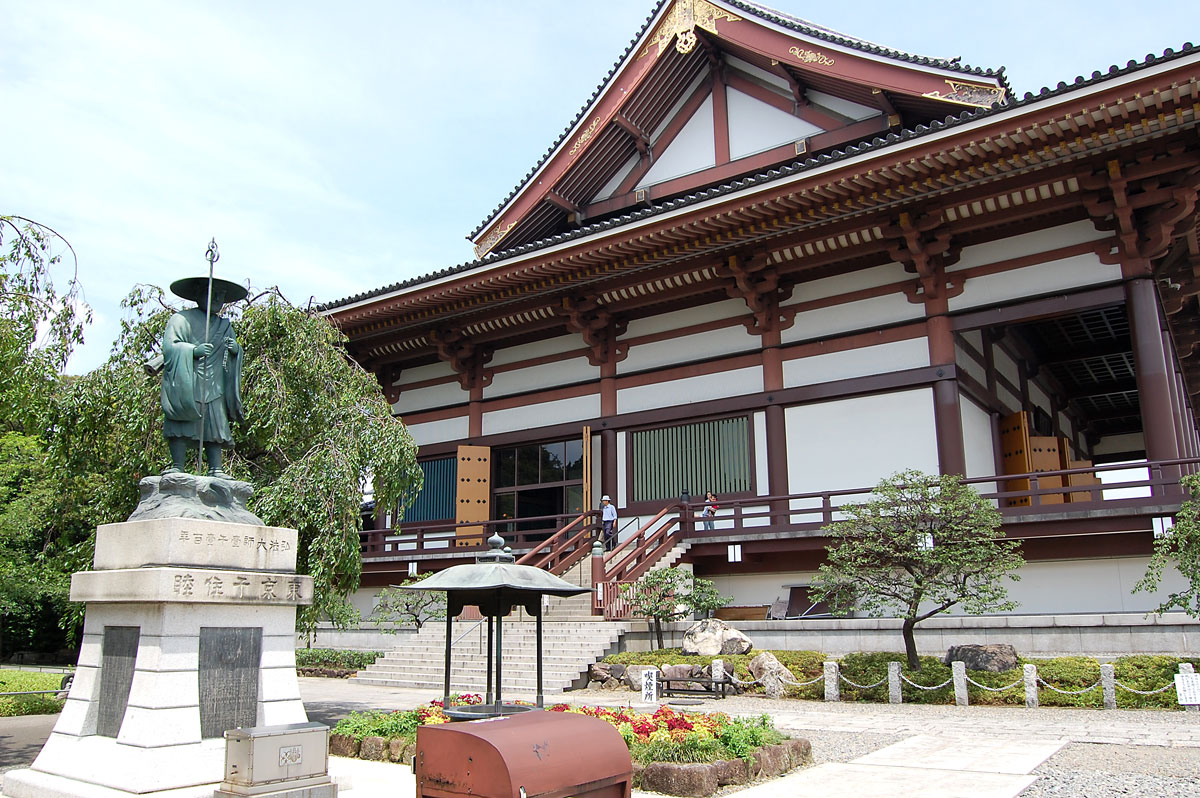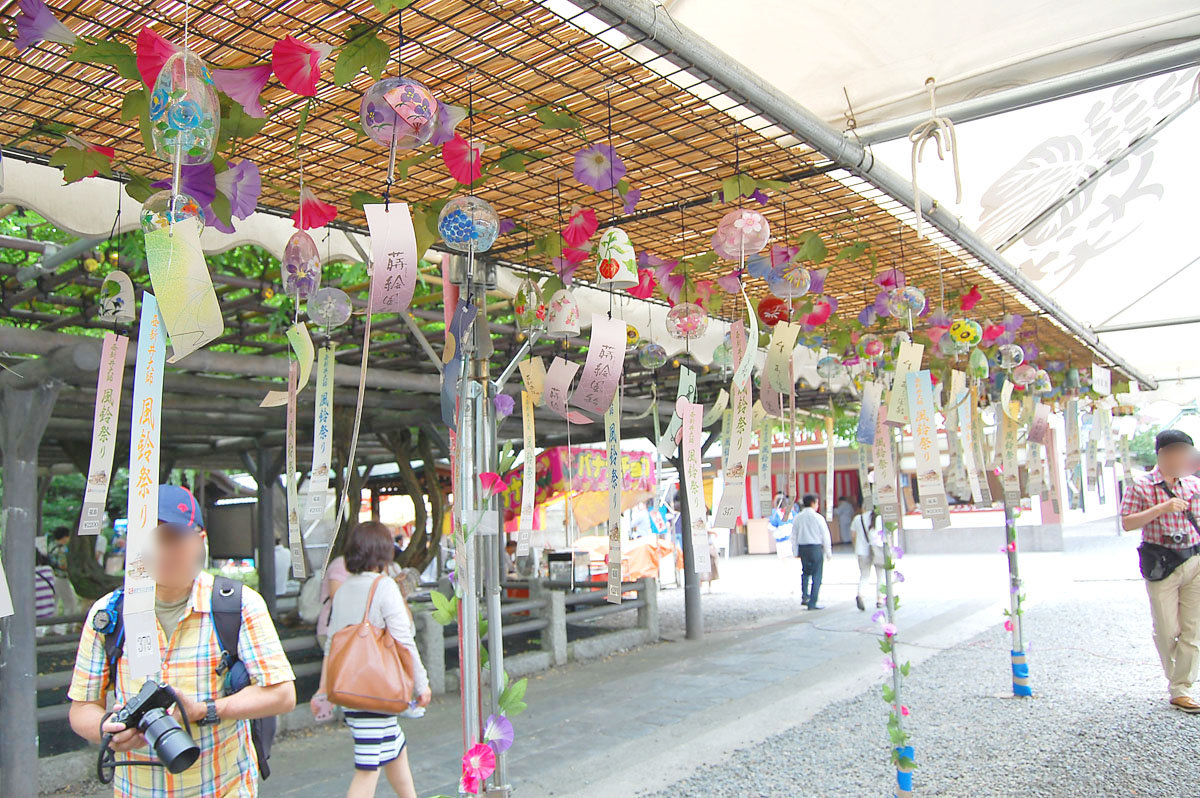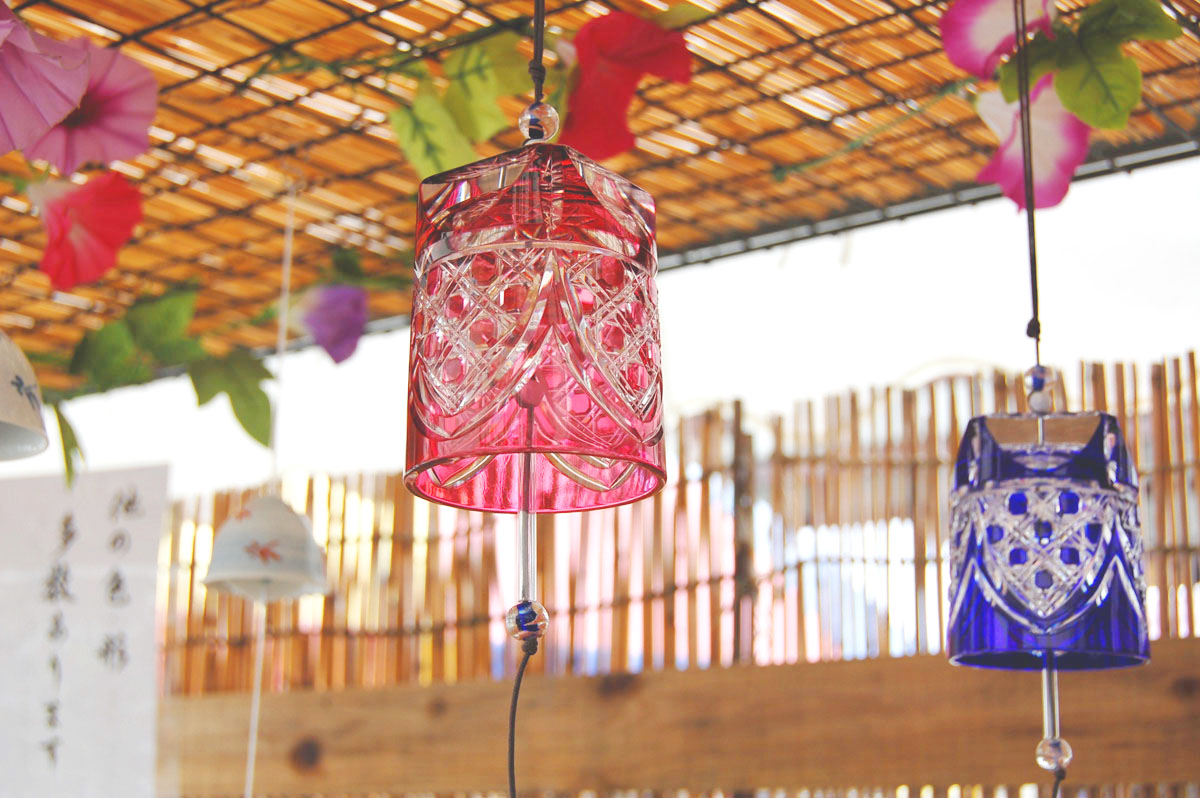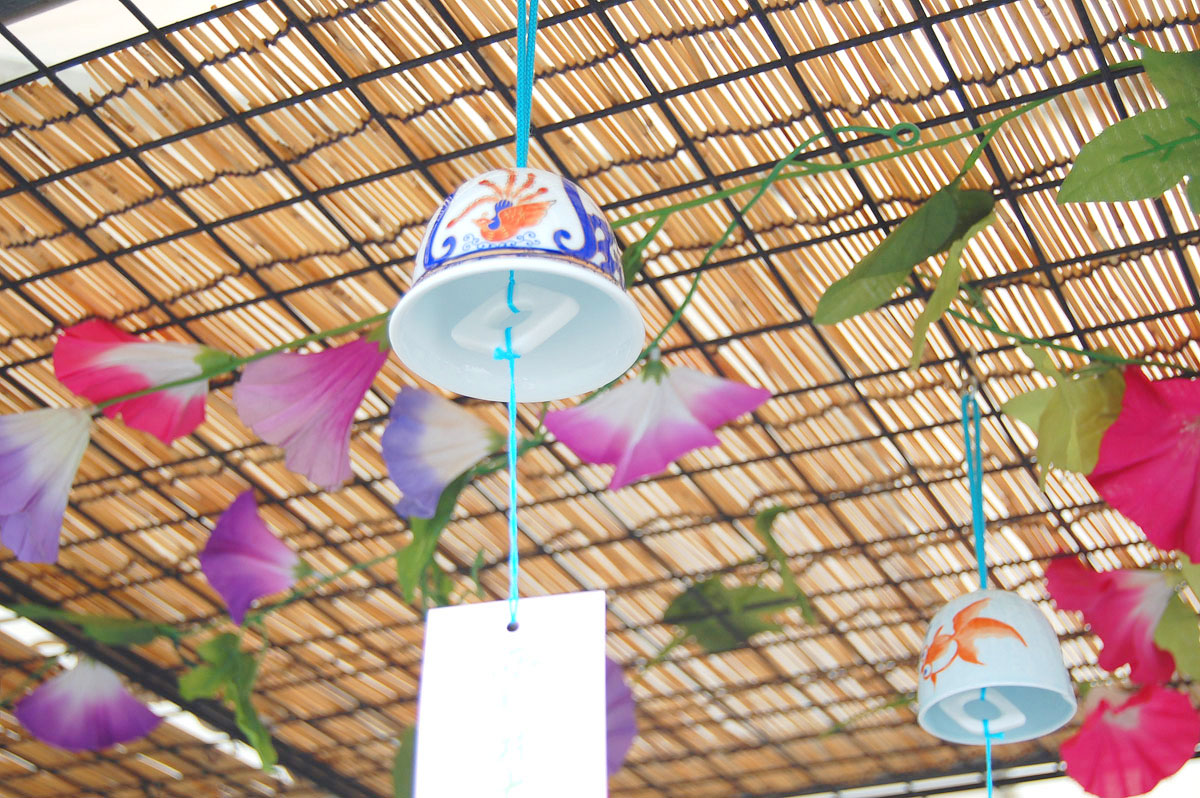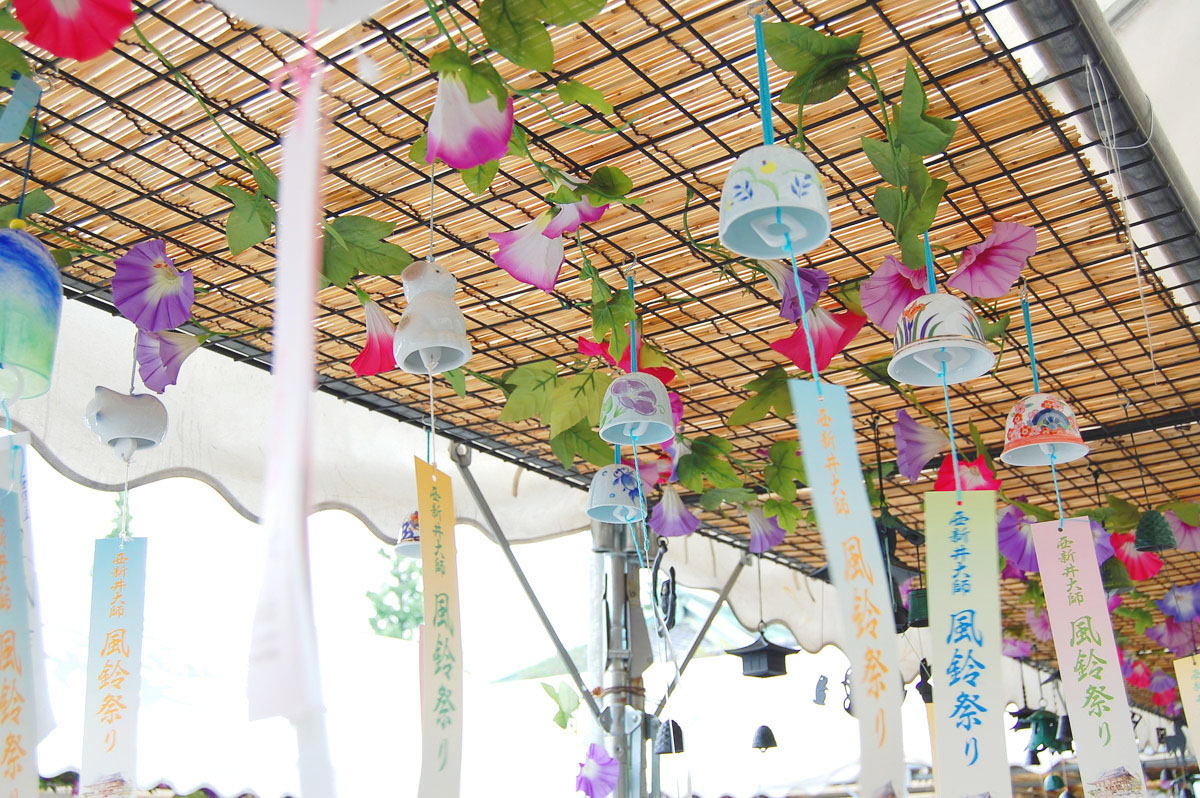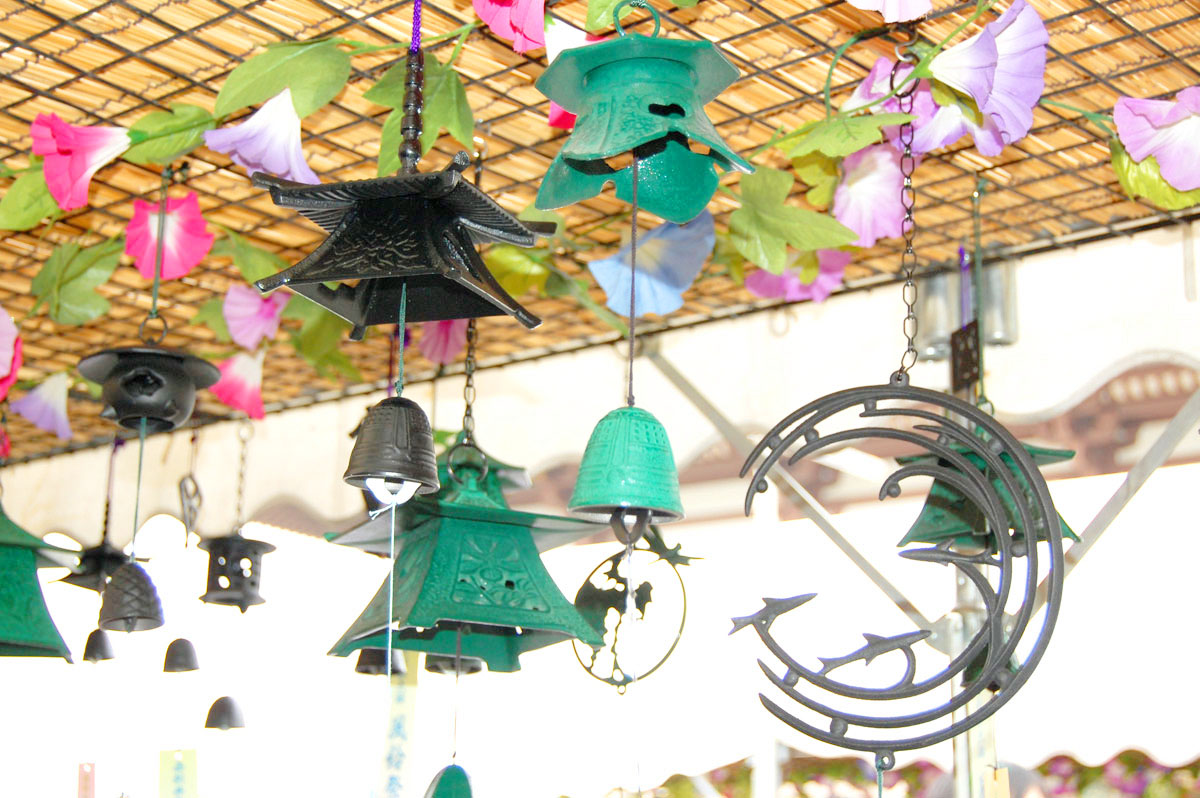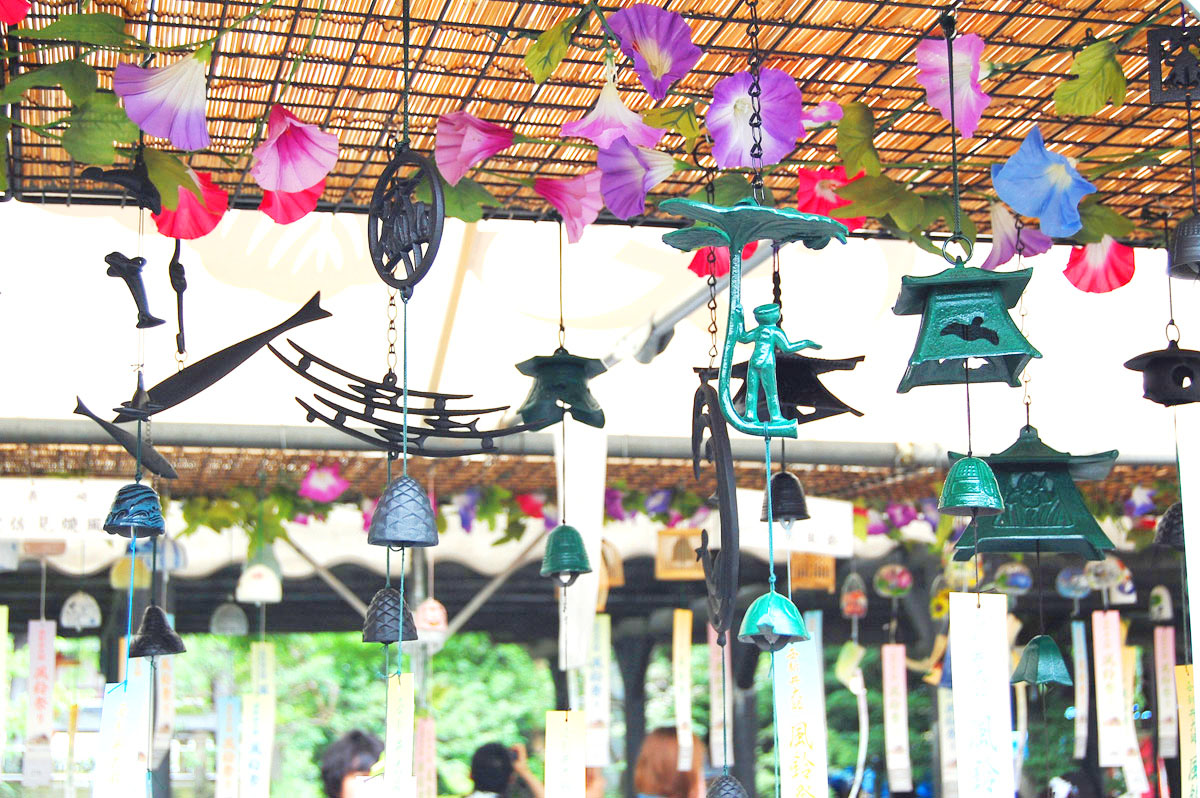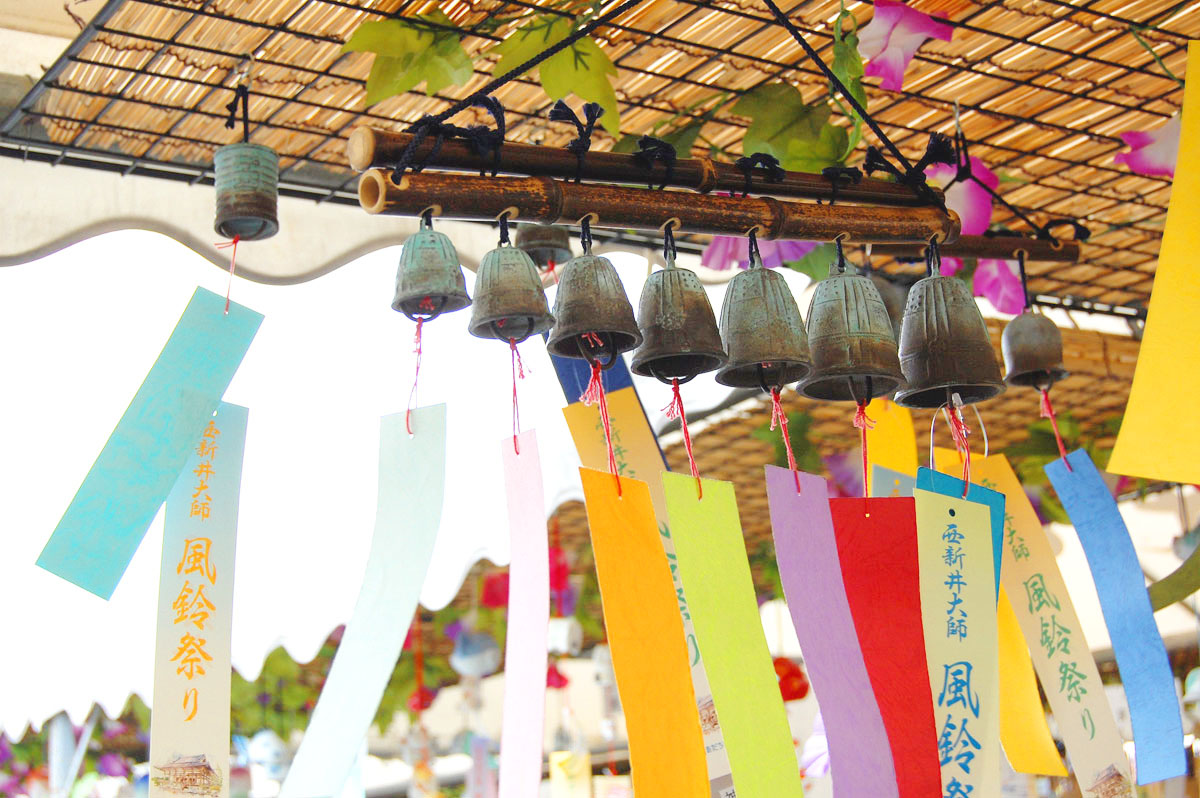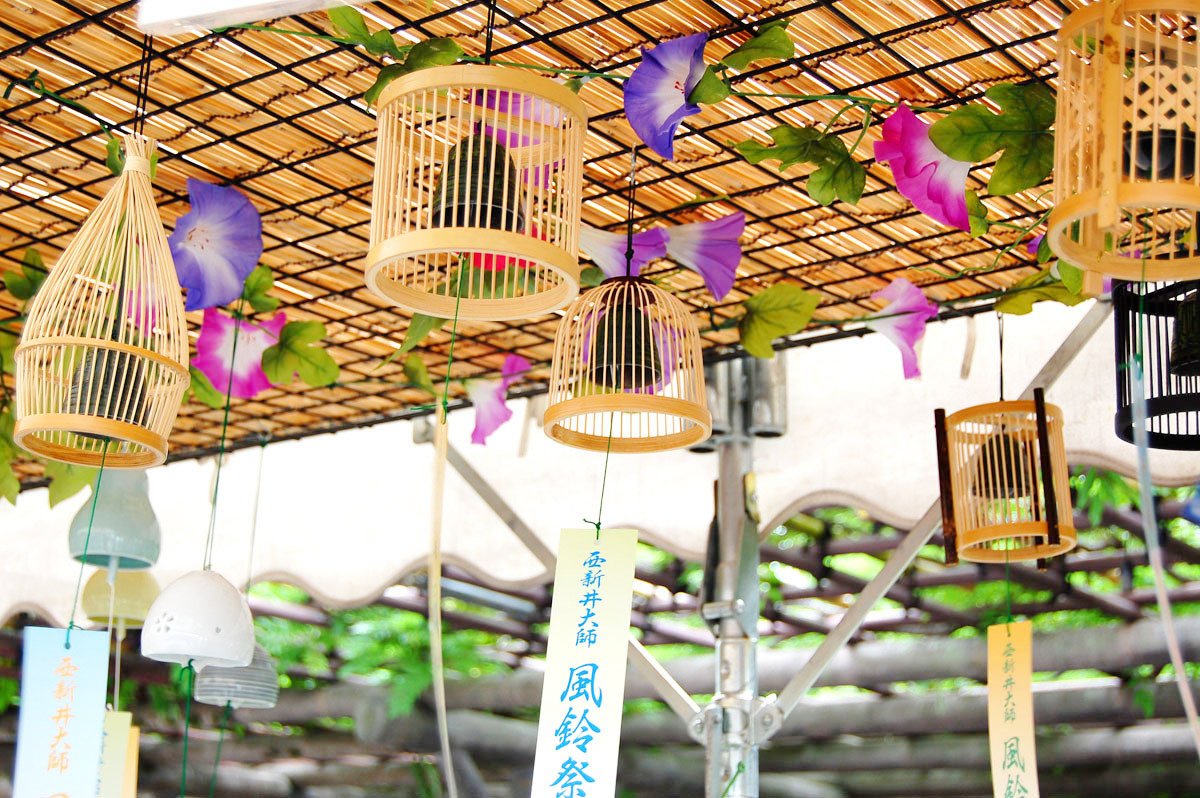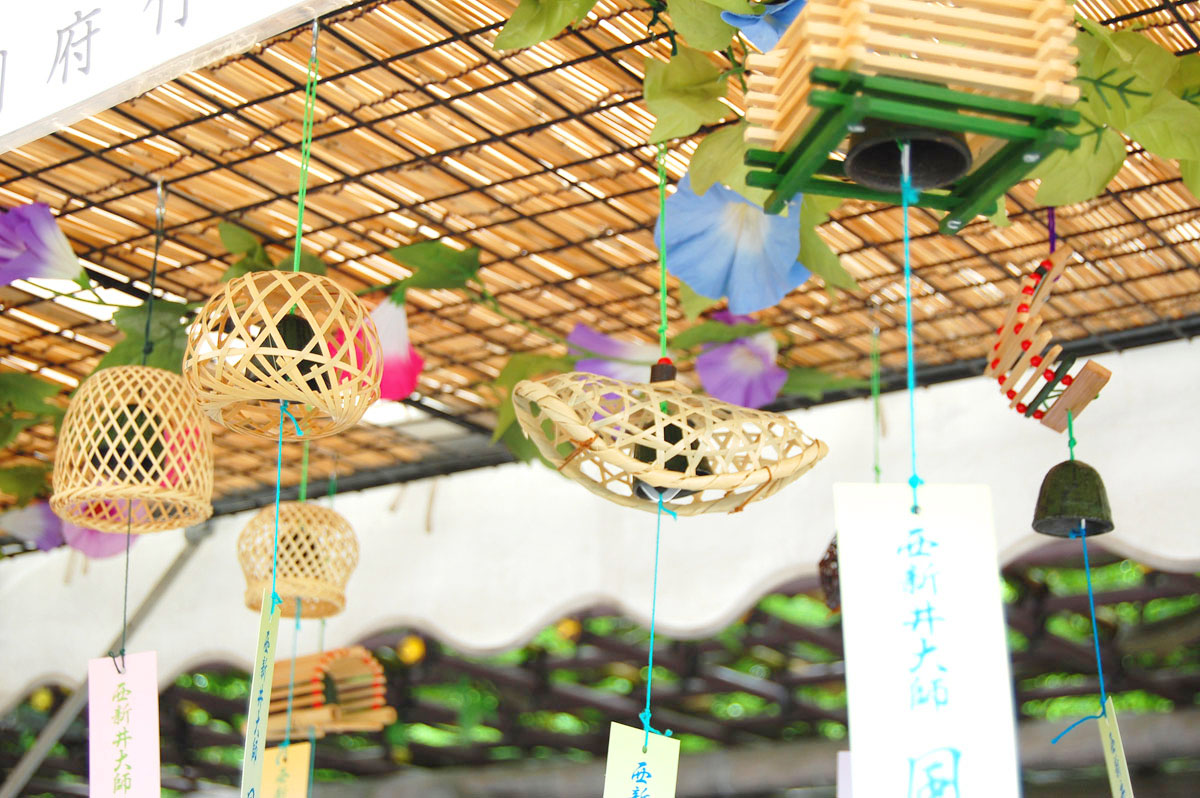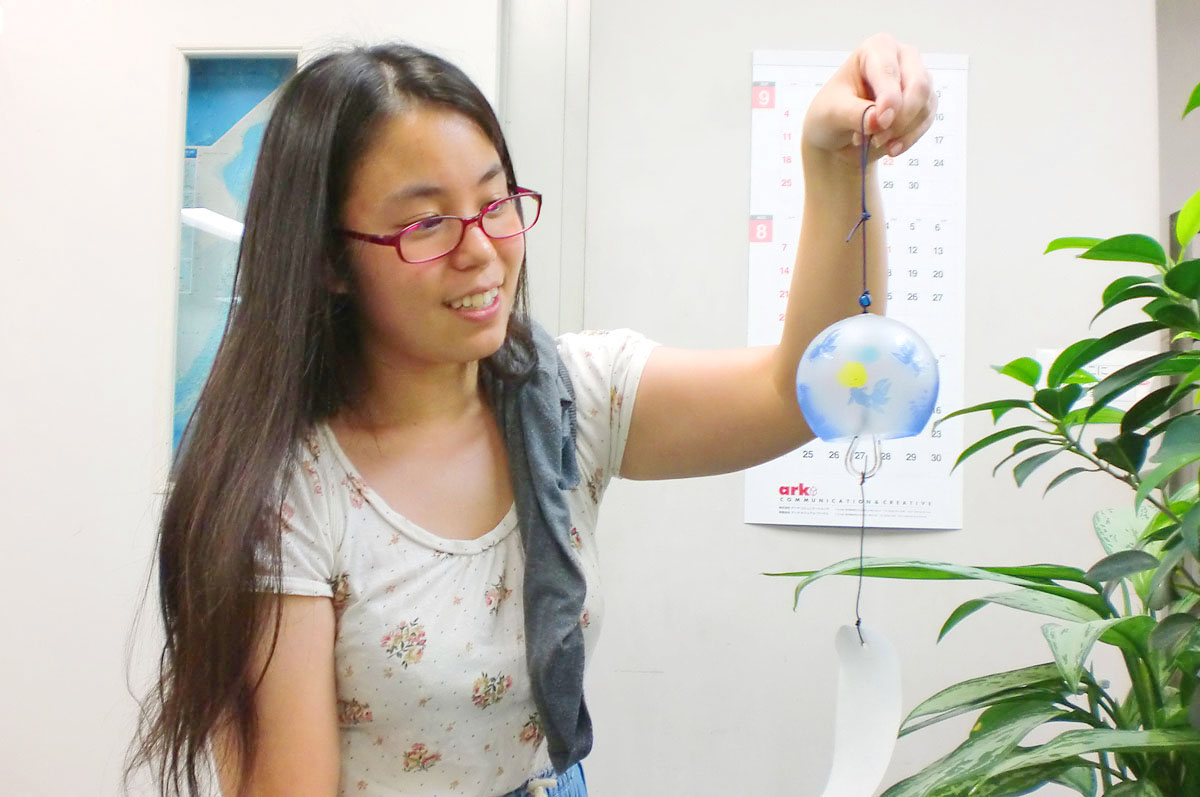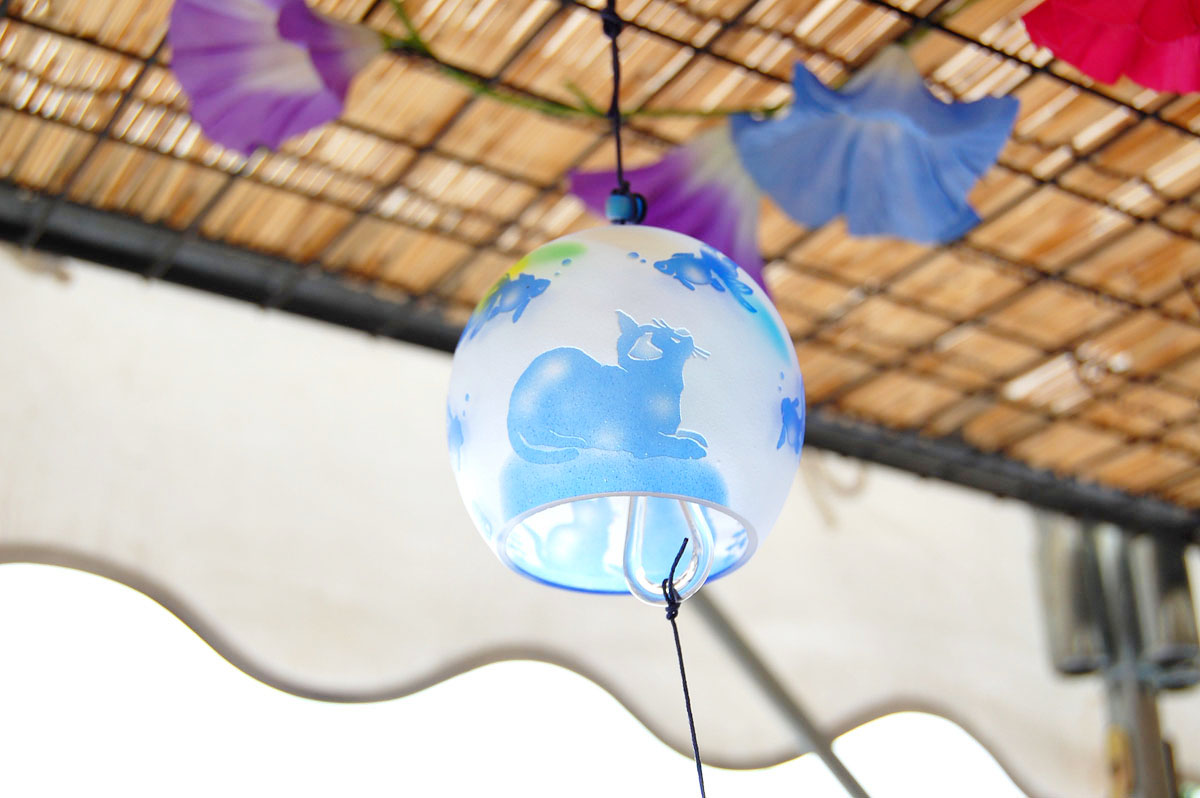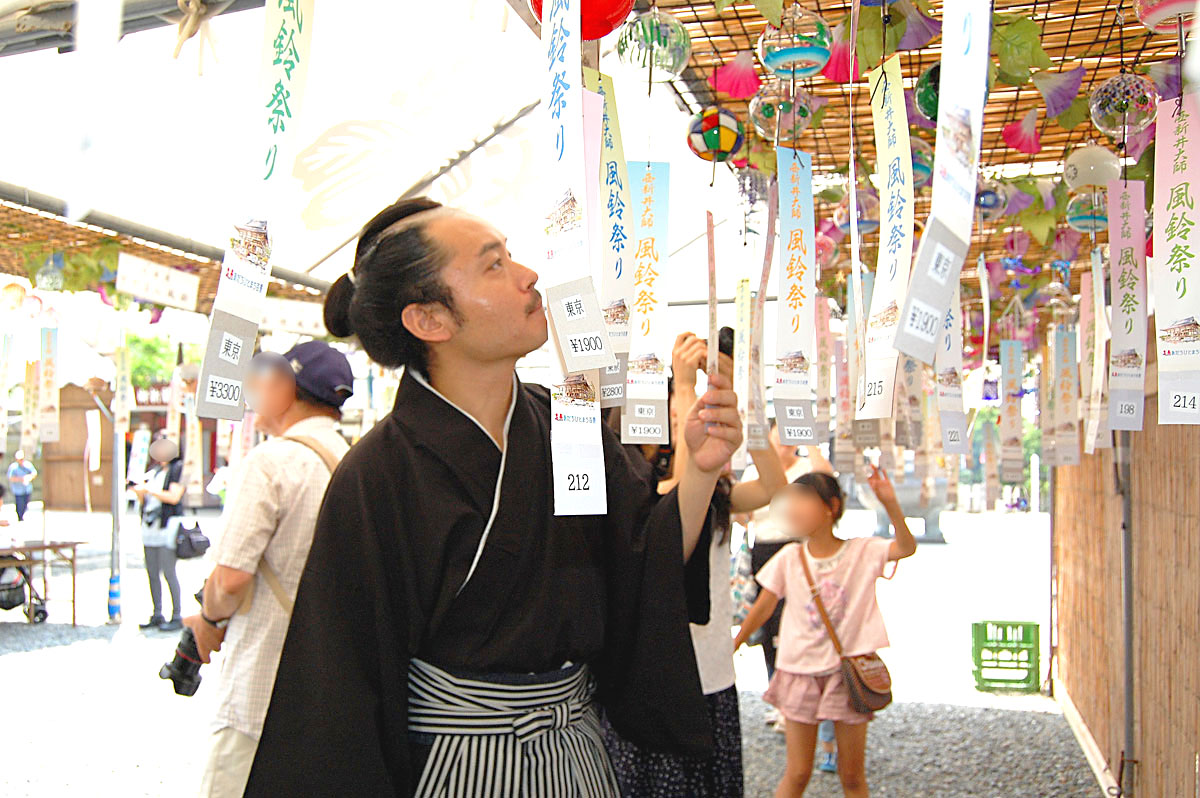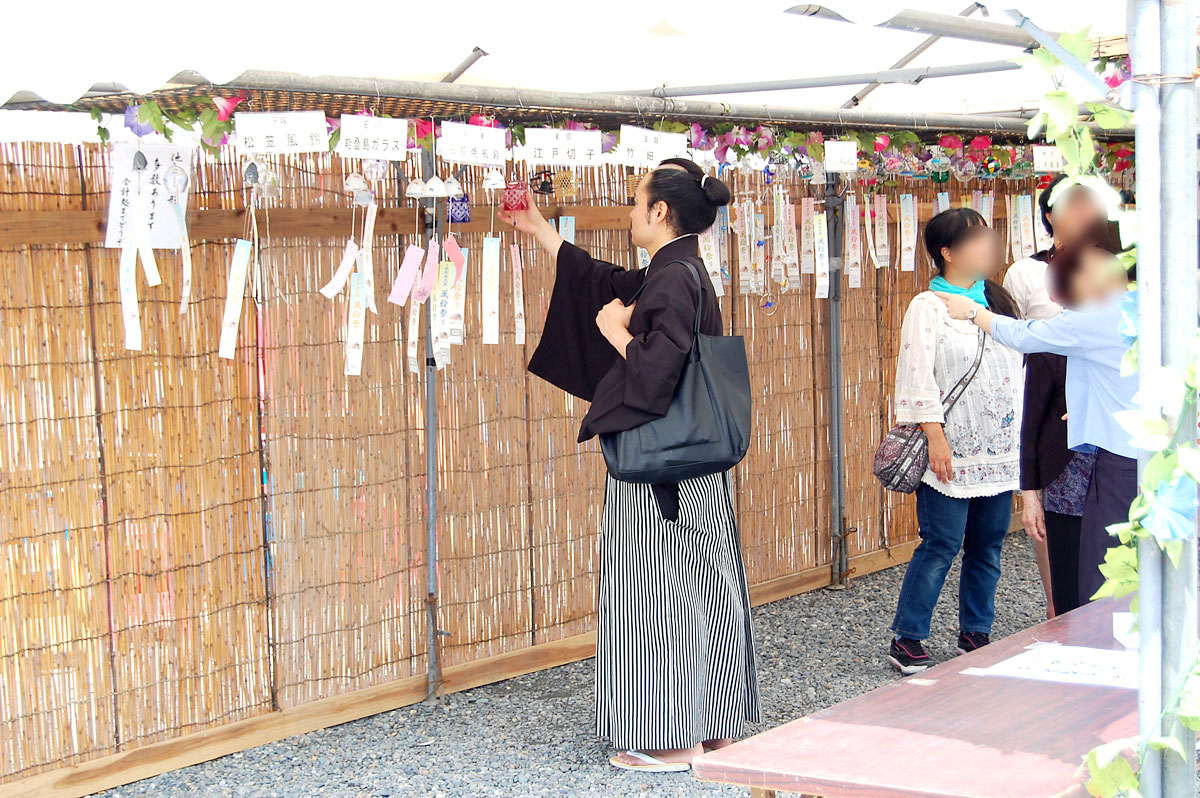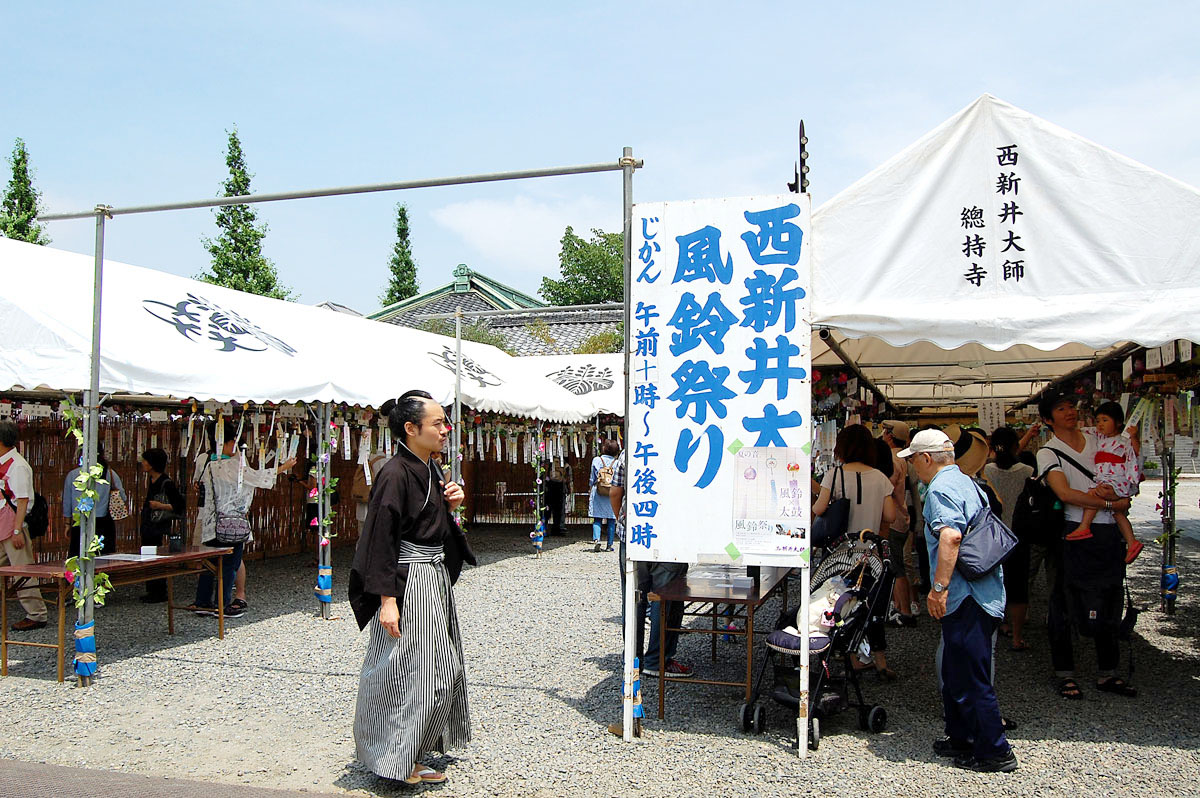[Last updated: July 9, 2023]With their charming designs and clear, breezy tones, traditional wind chimes are an indispensable part of any Japanese summer scene. Every summer in July, wind chimes of all shapes and sounds go on display at Nishiarai Daishi Temple in Tokyo’s Adachi City. Thinking there’s no better way to spend a summer’s day, we decided to check it out!
Sounds and Sights of Summer
From Nishiarai station on the Tobu Sky Tree Line, we took the local Tobu Daishi Line to its only destination: Daishimae station, where the path to the temple extends right from the ticket gates. The temple’s full official name is Gochisan Henjoin Sojiji, and—because of its connections to the Buddhist grand master Kukai—is said to be Eastern Japan’s equivalent to Mount Koya, a center of Japanese Buddhism.
Upon entering the temple grounds, we were struck by the sight of tents of all colors. Venturing inside, we found wind chimes of all kinds hanging from traditional bamboo blinds. All told, more than four hundred wind chimes from sixty-one different glassmakers came together to play a refreshing summer symphony.
Entrance to the festival is free, and you are free to gaze and listen to the chimes and take pictures to your heart’s content. The wind chimes on display are all for sale, so if you find one that strikes your fancy, simply jot down the number (prices are displayed as well) and head to the register, and it can be yours.
We were particularly charmed by the sight of an older couple so enchanted with the look and sound of the chimes that the beating sun and heat was clearly the furthest thing from their minds. “The glass and earthenware ones look so pretty, but you can’t beat iron and bronze for the sound.” “Aren’t the bamboo and paper-crafted ones are so elegant as well?” We couldn’t help but listen in and smile.
A Wind Chime for Everyone
Wind chimes truly come in all kinds—from the materials used to the design to the place of origin, we were amazed at the sheer number of variations, each one possessing its own unique look and sound. Which wind chime is right for you? We’ve put together a brief overview of the various types and their characteristics for your convenience.
●Glass Chimes●
Transparent and refreshing to the eye, glass wind chimes are perfect for a balmy summer’s night. Edo wind chimes from Tokyo are particularly famous. You’ll also find beautiful faceted wind chimes made in the traditional Edo-kiriko and Satsuma-kiriko styles. The Ichihara handcrafted wind chimes (from Chiba Prefecture) and Tsugaru Biidoro wind chimes (from Aomori Prefecture) were also beautiful, like bubbles floating on a gentle wind.
●Earthenware (Pottery) Chimes●
Mashiko ware, Mino ware, Shigaraki ware, Tokoname ware, Seto ware, Bizen ware, Hagi ware—all the major pottery schools of Japan have wind chimes on display. Kiyomizu ware, Arita ware, and Imari ware wind chimes will cost you a pretty penny, but if you want one, you’ll have to act quickly, as they’re known to sell out in three days.
●Metal Chimes●
You’ll find wind chimes forged from Nambu iron (Iwate Prefecture)—famous for its use in kettleware—to chimes of brass, iron, and metal hailing from Takaoka (Toyama Prefecture). Though perhaps not as colorful or eye-catching, their clear sounds have won the hearts of many. Check out some of the more recent designs—they’re more playful than you might think!
And that’s not all!
Keep an eye out for unique wind chimes that make creative use of local specialties. Bamboo chimes, in particular, have become popular among tourists for their uniquely Japanese look, as have the so-called “kaze-kurage” (lit., wind jellyfish) from Fukui made from a kind of traditional Japanese paper known as Echizen-washi. Binchōtan (white charcoal) wind chimes will also soothe you with their gentle rattling sounds. There are even wind chimes featuring popular mascot characters, such as the ever-popular Kumamon (Kumamoto Prefecture).
(Click the video to hear the sound.)
* * *
We purchased this Fujioka glass wind chime from Gunma Prefecture. From its clear sound to the charming cat and goldfish design, it quickly won our heart. It is the joint work of Kenji and Miwako Takagi, who employed the techniques of free-blowing and sandblasting (respectively). It’s sure to keep us cool during the hot summer ahead.
Nishiarai Daishi Wind Chime Festival 西新井大師 風鈴祭り
When: From July 15th to July 30th, 2023
Hours: 10:00 a.m. to 4:00 p.m.
Where: Sojiji Temple at Nishiarai Daishi (1-15-1 Nishiarai, Adachi City, Tokyo)
(西新井大師 總持寺:東京都足立区西新井1-15-1)
By train: A short walk from Daishimae Station on the Tobu Daishi Line
URL: http://www.nishiaraidaishi.or.jp/
Facebook:https://www.facebook.com/nishiaraidaishisoujiji/
By chance, we ran into a Japanese comedian called O-samurai-chan (roughly, “Little Samurai“). We decided to be bold and introduce ourselves, and he was more than happy to chat and take a photo with us. We were impressed to find out that his traditional samurai topknot is not a wig, but totally authentic!
*This article was originally posted on July 15, 2016.
Translation: Jon Machida
